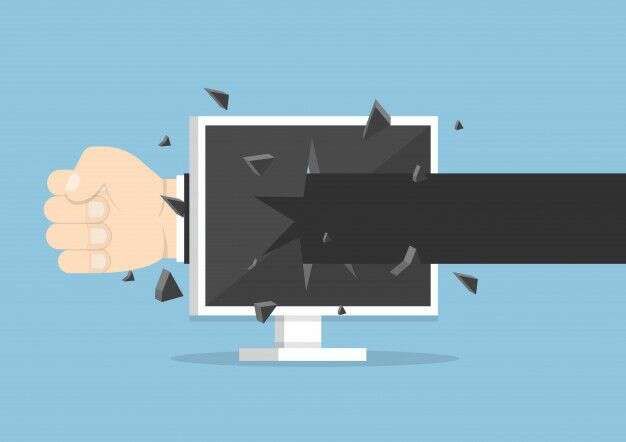Can you, regardless of your age, remember a situation from your teenage days that makes you feel uncomfortable? Do you still feel the taste of fear, shame and anxiety thinking about an event when you were embarrassed by your peers, or when you, consciously or unconsciously, were hurting your classmate? Peer violence is not a newly discovered phenomenon, although it is certainly a phenomenon that evolves with the development of modern technologies, with the consequences transcending physical context.
WHAT IS A CYBERBULLYING AND WHY IS IT OK TO BE A WEIRDO?
Cyberbullying is a form of violence that occurs while using digital technologies. It takes place in a digital context - social networks, messaging applications, online platforms and mobile phones with the intention to hurt or degrade others. Reality indicates that this violence does not stop with the ceasing of a situation – but that the person who is a victim of cyberbullying often suffers constant insults and humiliations, usually followed by traditional forms of bullying – outside, in the real world.
These days, when private life is largely intertwined with public life, when telephones become a children's must have, when absence on social networks is often seen as a shame, it is difficult to immediately recognize violence and adequately respond to it. Adolescents who become victims of cyberbullying, in most cases of abuse, suffer in silence, fearing that their reaction will cause even stronger backlash. Victims of violence are reluctant to call it violence, because they fear being marked as weirdos or complainers, especially during the period of adolescence when one intensely seeks for peer acceptance.
DON'T BE A CHILD, EVERYTHING WILL REMAIN JUST BETWEEN THE TWO OF US
Some annoying teachers or school psychologists have probably tried to explain to you what the violence is and who to turn to when you identify it. Maybe an article with the confession of a teenager who became the cyber victim popped up on your Facebook, or someone has asked you to report a fake profile on Instagram. Let’s be honest, how much did you really think about the essence of this problem and the experiences that the victims of violence are going through? It's just not too interesting to think about - all you want are good filters for your photos and the ability to screenshot other people's stories in secret.
Digital peer violence is a complex phenomenon that manifests itself in many ways. The profiles of bullies are various, because they are not exclusively the problematic children. Moreover, this violence is usually followed by a large number of passive observers, as well as the inability of the victim to find his/her safe place in the midst of exposure to violence. The question is, how to recognize digital violence and how to react in such situations?
Although it might happen that an unpleasant situation starts as a fun or a part of popular trend, at the moment you start feeling upset about the joke, and your peers continue to tease you, although you already asked them to stop, such a joke has definitely gone too far. Despite the fact that the Internet has made our lives so much easier and that we tend to believe that our school or social network friends would not harm us, it is worth mentioning once again that it is your right to report something that makes you feel bad.
It is not okay when someone constantly disturbs you, sends you messages that you don't respond to, and after a while starts to bother you. It is not okay when someone spreads lies about you or reveals your private information on the Internet. Peer jokes on the Internet happen everyday, but if such situations makes you feel anxious, ashamed or makes you question yourself even if you are away from these people, it is a problematic behavior that should be reported. Your private chats and photographs must never become the subject of blackmail. You should not be ashamed that you have been manipulated by a person you have trusted. Identity theft, threats and inappropriate photos sending are also situations that you need to react to. In the virtual world you have the right to hang out with the friends you choose, to share the photos and thoughts that you want, as long as you’re not hurting other people, as well as not to ignore and report people who scare or blackmail you. Remember, misjudging people is not your fault, it is not a shame to react to violence, and asking for help is not an indicator of weakness.
DATA TO BE CONCERNED ABOUT?
What is the situation in our country? According to the latest research of the National Youth Council of Serbia, 38% of young people have been exposed to some form of digital violence, while almost 65% have experienced physical or verbal violence. More than 80% of young people have witnessed some form of violence, and the fact that 70% of them did not react to or report it shows us that this data is not just a dull statistical information, but a reality worth worrying about.
The state of emergency in Serbia, which was introduced as a consequence of the pandemic, made young people feel insecure, lost and frightened. Not only did private, school and business life move to the online space, but this state also caused an increase of digital violence against young people, taking into account that most victims (54.5%) experienced violence online.
WHO SHOULD YOU ASK FOR HELP?
The easiest way for young people to confide is by telling it to their parents or best friends. Even if you don't have the habit of talking to your parents about private matters, in situations like these they are the ones who would probably react adequately and give you all the support you need. If you feel more comfortable, you can share your problems with a school psychologist, pedagogue or expert by calling the following number for free: 19833. Besides that, you can report violence that you have experienced or witnessed to the official email of the Ministry of the Interior Affairs of Serbia: childprotection@mup.gov.rs . Also, here are links to report violence on social networks: Facebook, Instagram, YouTube, Twitter, WhatsApp, Kik, Snapchat, Tumblr and WeChat.
Digital violence is not a naive and harmless phenomenon, but a series of events that can cause permanent stress and trauma to the victims. The solution of this problem is not to stop using the Internet, digital tools or avoid society. The answers lie in the daily education and raising awareness of this phenomenon, as well as raising our voices and reporting violence, whether we feel it ourselves or just witnessing a situation to which we need to react as soon as possible.
The text is part of a Reclaiming Privacy: A Tool to Fight Oppression project, which is carried out within the cooperation of Belgrade Open School and Partners Serbia, SHARE Foundation, the Association Da se zna!, NGO ATHENS and the A11 Initiative, with the support of the Delegation of the European Union to Serbia.
This text has been produced with the financial assistance of the European Union. The contents of this text are the sole responsibility of the author and don't reflect the views of the European Union.
Author: Jelena Dadic
The photo was taken from HERE.

